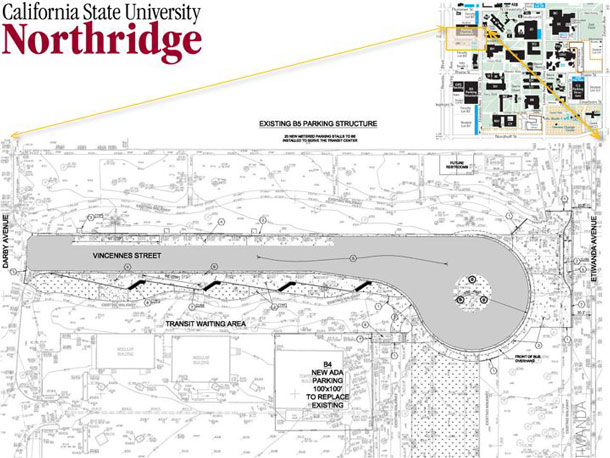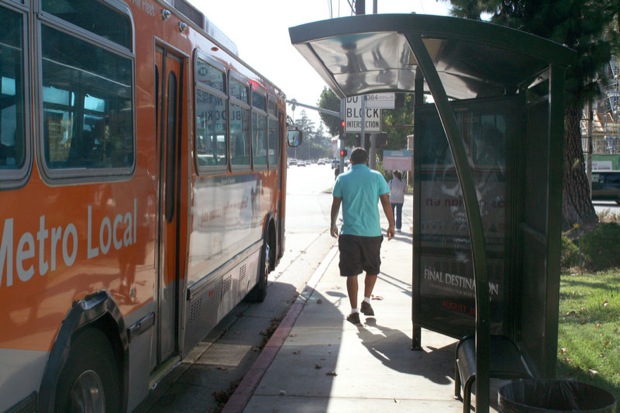

In an effort to promote public transportation and reduce traffic congestion on campus, the Associated Students (A.S.) and the Mass Transit Authority (MTA) have begun plans to build an on-campus transit center.
A.S. President Abel Pacheco said the transit center promotes the governing body’s goal of sustainability.
“I think it’s a step in the right direction,” said Pacheco. “We’re trying to encourage students to catch more public transportation and this is something that goes along with that.”
According to Nathaniel Wilson, CSUN’s campus architect, the transit center, if built, would be located on Vincennes Street between Darby Avenue and Etiwanda Avenue near the B5 parking structure.
Routes to and from campus have yet to be determined.
Before the transit center can be built there are several hurdles to overcome, according to Wilson. CSUN has applied for a federally funded grant to pay for the construction but those funds have yet to be released.
The campus is working with a civil engineering firm, said Wilson, but only a schematic design has been prepared due to the delay of the funds.
Other obstacles, such as agency approvals and bidding, also stand in the way of the transit center’s construction, said Wilson.
If those funds and approvals come through early enough, Wilson said, students and faculty can expect construction to begin in June and be completed in August.
The transit center will also include several amenities such as digital display boards, bike lockers and shelters.
“Less is more,” said Wilson. “The area around Vincennes has great mature trees that provide shade. The plan is to increase these. The three shelters are plain-old bus stop shelters for weather protection.”
Currently, the closest bus stop for CSUN commuters is on Nordhoff Street and Lindley Avenue.
That’s not all. According to Wilson, the transit center could also serve other modes of transportation including flex cars and the campus tram.
Wilson also said he expects the transit center to reduce traffic on campus by removing cars from the streets.
“According to the CSUN Master Plan traffic engineering study, several of the intersections around CSUN are already impacted,” said Wilson. “The more people that use the buses at the transit center, the less vehicle traffic [there will be] to the campus.”
Sheela Bhongir, the A.S. director of environmental affairs, recently helped push through plans for the transit center.
Last December, Bhongir and Wilson presented their case for the transit center before the Metro San Fernando Valley Governance Council. According to Bhongir, the council voted unanimously to approve rerouting MTA buses to the campus.
In an email, Bhongir said the transit center would have a positive impact on the campus environment.
“Reducing the number of vehicles would have a positive environmental impact simply because of less congestion, smog, and fossil fuel usage. More importantly, each bus replaces the number of parking spots we use at CSUN, thus freeing up space for other facilities such as classrooms,” said Bhongir.




